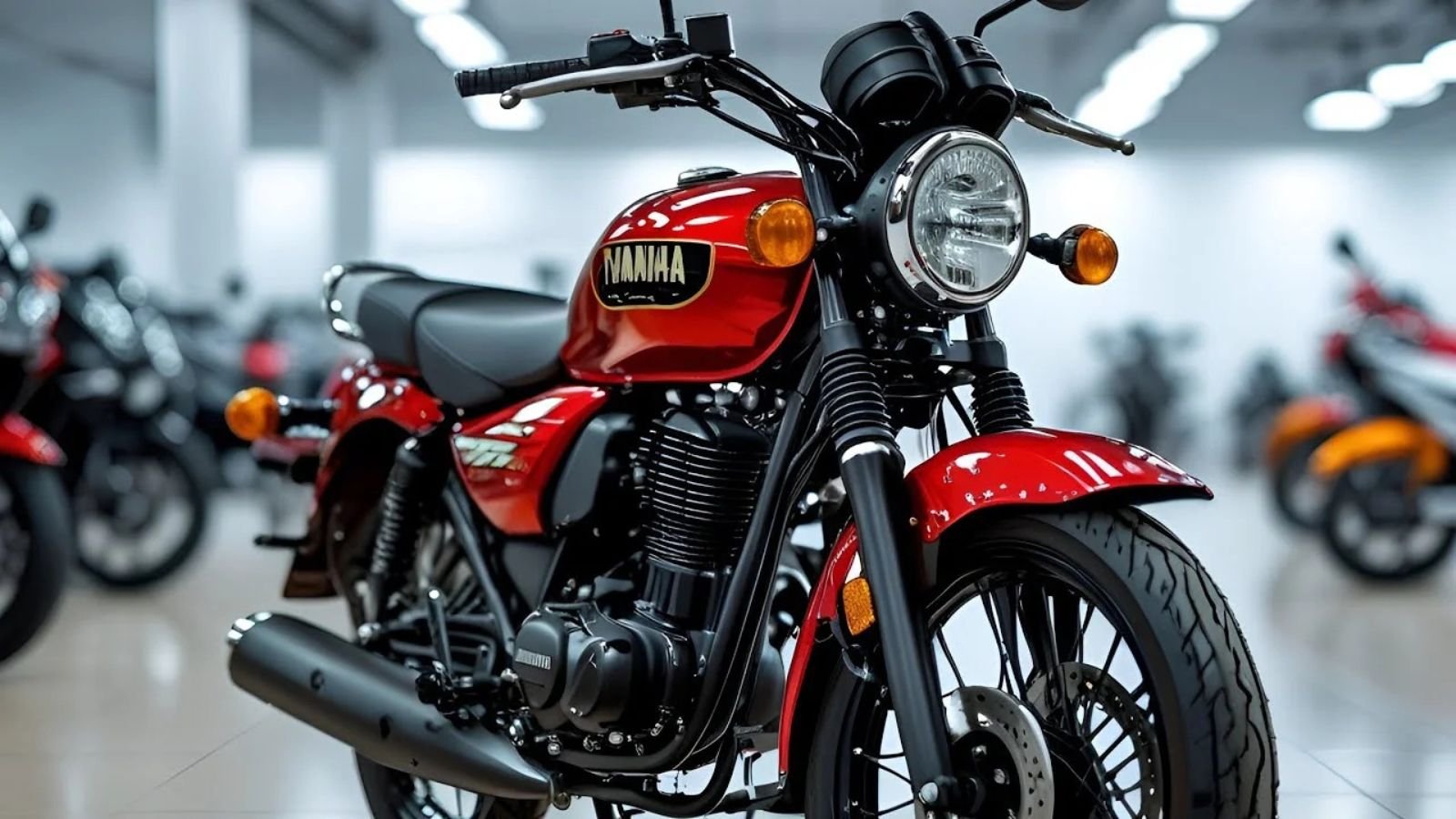The Yamaha RX100 is not just a motorcycle; it’s a symbol of raw power, nostalgic freedom, and unfiltered riding pleasure. For millions of Indians who lived through the 1980s and 1990s, the Yamaha RX100 wasn’t just a bike—it was a dream come true. It captured the aspirations of a generation with its fierce acceleration, lightweight design, and ear-piercing exhaust note. Even today, long after it was discontinued, the Yamaha RX100 continues to occupy a legendary status in the hearts of motorcycle enthusiasts. In this detailed article, we’ll explore the legacy of the Yamaha RX100, what made it so iconic, and why it continues to spark interest in 2025.
Yamaha RX100 – Key Highlights
| Feature | Details |
|---|---|
| Engine | 98cc, air-cooled, 2-stroke |
| Power | 11 HP (approx.) |
| Gearbox | 4-speed manual |
| Weight | Around 100 kg (lightweight) |
| Top Speed | 100 km/h (approx.) |
| Brakes | Front & rear drum brakes |
| Fuel Efficiency | 25-30 km/l (varies with tuning) |
| Suspension | Telescopic forks (front), Swingarm (rear) |
| Production Years | 1985–1996 (Discontinued) |
| Legacy | Cult classic, loved for raw power & sound |
Yamaha RX100: More Than Just a Bike
The Yamaha RX100 was launched in India in 1985 at a time when most two-wheelers were sluggish and uninspiring. It came like a storm—agile, powerful, and stylish. The Yamaha RX100 had a 98cc two-stroke engine, which may seem modest today, but its power-to-weight ratio was nothing short of extraordinary. Weighing just around 100 kg and pumping out 11 HP, it could accelerate with surprising intensity. Riders often compared it to bikes with larger engines simply because of how quick and aggressive it felt.
Its straight-pipe exhaust note was instantly recognizable. The moment someone kicked it to life, you could tell from blocks away that an RX100 was nearby. The high-revving nature of its engine and the raw, unfiltered mechanical growl made riding the Yamaha RX100 a sensory experience.
Why the Yamaha RX100 Gained a Cult Following
The Yamaha RX100 quickly became a sensation among youth, racers, and city commuters alike. Its lightweight frame made it easy to maneuver through traffic, while its explosive acceleration made every ride thrilling. In an era where practicality was the norm, the Yamaha RX100 dared to be different—it was a bike that didn’t just take you from point A to point B, but made you fall in love with the journey.
Its styling was simple yet iconic. A slim fuel tank with bold graphics, round headlamps, chrome fenders, and spoked wheels gave it a distinct retro look that never really went out of style. And because it was easy to maintain and modify, the Yamaha RX100 also became a darling of street racers and drag race enthusiasts.
Engine Performance: The Heart of the Beast
What really set the Yamaha RX100 apart was its two-stroke, 98cc engine. Despite its small displacement, the engine was highly responsive and delivered power in a way that most four-stroke bikes could only dream of. The lack of complex emissions systems meant throttle response was immediate and visceral.
Its 4-speed manual gearbox was smooth and precise, giving riders a great feel of control over the powerband. Even when pushed to its limits, the Yamaha RX100 delivered consistent performance. It had a top speed of around 100 km/h, which made it one of the fastest bikes in the 100cc segment back then.
Lightweight Advantage
The Yamaha RX100 weighed just around 100 kilograms, giving it an unmatched power-to-weight ratio in its class. This not only helped in faster acceleration but also made it exceptionally nimble. Whether you were zipping through urban traffic or cruising on empty roads, the bike felt incredibly alive.
Its telescopic front forks and rear swingarm suspension provided decent comfort, and although the drum brakes weren’t the best by today’s standards, they were more than adequate for the RX100’s lightweight structure.
Customization and Mod Culture
One reason the Yamaha RX100 has remained in the spotlight is its immense potential for customization. Enthusiasts love tweaking it—from engine upgrades and porting jobs to custom paint and modern components. Modified Yamaha RX100s often turn up at auto expos and vintage bike rallies, proudly showing off their legacy in a new light.
Even today, workshops dedicated to restoring and customizing the RX100 are thriving, especially in cities like Delhi, Pune, Bangalore, and Hyderabad. This bike has become a canvas for creativity, and owning one often feels like owning a piece of history.
Racing Roots and Street Cred
Racers and street riders alike loved the Yamaha RX100 for its raw performance and responsive engine. The bike’s ability to deliver high revs quickly and maintain a steady pace over short distances made it a natural fit for drag racing. Many local racing scenes during the 90s revolved around RX100 showdowns.
Its ability to handle tight corners and accelerate out of them effortlessly made it a street warrior in the true sense. Young riders found their first taste of adrenaline on the RX100, and those memories have lasted a lifetime.
Why Was the Yamaha RX100 Discontinued?
The Yamaha RX100 was phased out in 1996, not because it was any less popular, but due to tightening emission norms. The two-stroke engine, while exhilarating, was also a heavy polluter compared to the more environment-friendly four-stroke engines that started dominating the market.
Yamaha tried to replace the RX100 with bikes like the RXG, RX135, and RXZ, but none could truly replicate its magic. As emissions regulations became more stringent, the era of two-stroke engines slowly came to an end.
Can You Still Buy a Yamaha RX100?
While the RX100 is no longer in production, the used bike market is still buzzing with demand. Finding a well-maintained Yamaha RX100 can be a challenge, but those who do come across one often treat it like a prized possession. Prices vary based on condition, originality, and modifications. A clean, stock RX100 can fetch anywhere from ₹50,000 to ₹1.5 lakhs, with some rare models going even higher.
Restoration has also become a niche industry. Many garages specialize in bringing old RX100s back to life, often using original spare parts or creating them from scratch. This speaks volumes about the bike’s legacy and the love it continues to receive.
Is It Practical to Use the Yamaha RX100 Today?
Using a Yamaha RX100 for daily commuting in 2025 is certainly possible, but not without its challenges. Fuel efficiency is lower than modern 100cc bikes, averaging around 25–30 km/l. Spare parts, although available in some regions, can be expensive or hard to find. Regular maintenance is a must, especially since many RX100s are now over 25 years old.
However, for enthusiasts who value riding feel and nostalgia over mileage, nothing compares. If you’re okay with occasional tuning and want a machine with soul, the Yamaha RX100 is a rewarding ride.
Will Yamaha RX100 Make a Comeback?
There have been rumors and whispers of Yamaha bringing back the RX100, possibly in a modern, four-stroke avatar. While this would be exciting news, replicating the character of the original two-stroke engine is a tall order. A reimagined Yamaha RX100 would need to meet today’s emission norms while still capturing the spirit of the original.
Only time will tell whether Yamaha revives the RX100 badge, but even if it doesn’t, the original has already secured its place in Indian motorcycling history.
Conclusion: The Yamaha RX100 Lives On
The Yamaha RX100 is not just a motorcycle—it’s an emotion etched into the memories of riders across India. Its raw engine, thunderous exhaust, lightweight design, and sheer personality made it one of the most iconic bikes ever produced. Despite being discontinued for nearly three decades, the Yamaha RX100 continues to command respect and admiration.
Collectors hunt for it, workshops restore it, and enthusiasts swear by it. In a world filled with technologically advanced motorcycles, the Yamaha RX100 reminds us that sometimes, simplicity and soul are all you need to fall in love with riding.
If you’ve ever had the chance to ride a Yamaha RX100, you’ll know why it’s not just a machine—it’s a legend. And if you haven’t, now might be the time to chase down that legend and experience it for yourself.
Some Important Link
| Telegram Group | Click Here |
| WhatsApp Group | Click Here |
| Home Page | Click Here |










